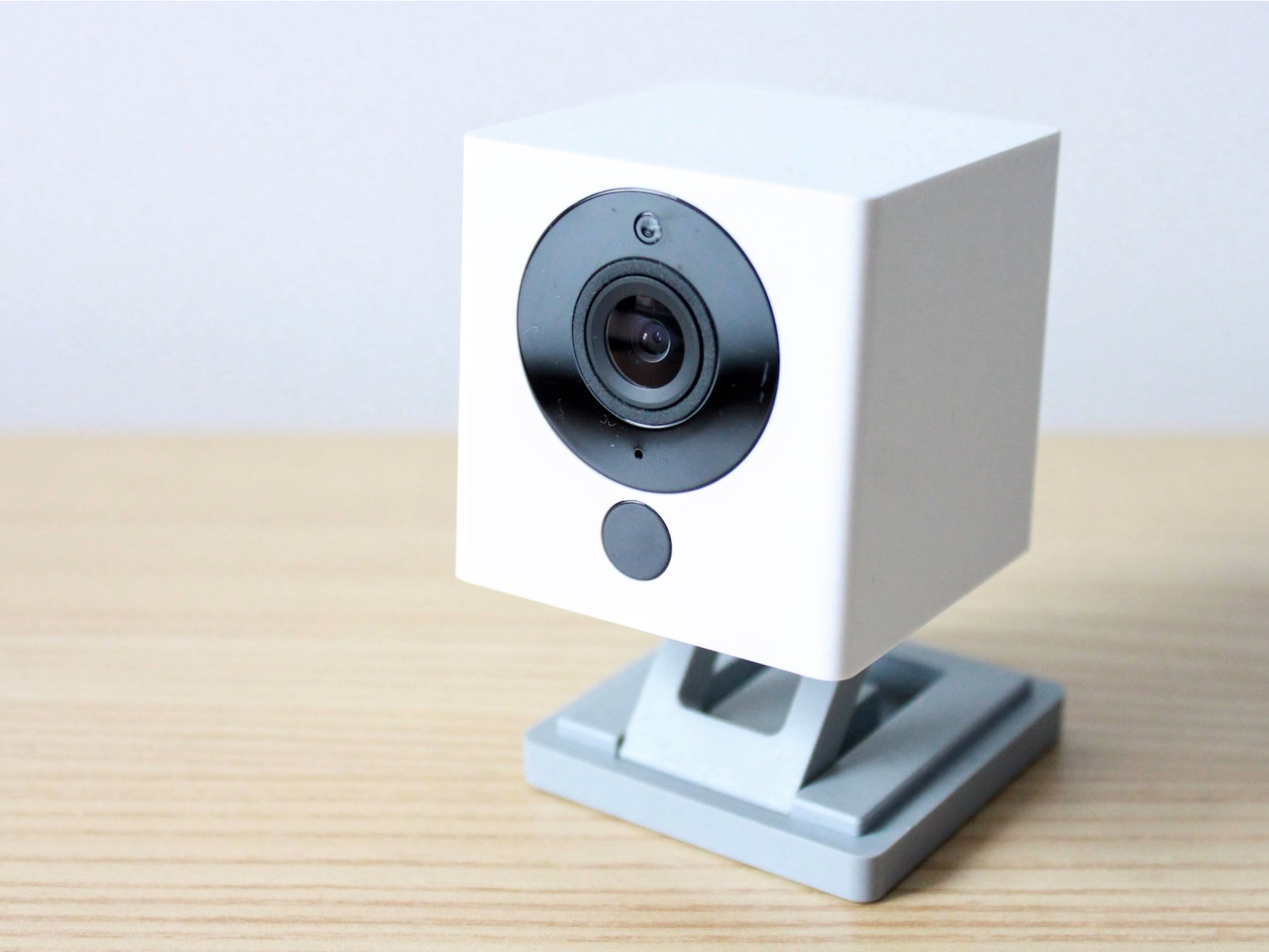Seattle-based smart home startup Wyze has two goals: make a great home security camera, and make it cheap.
The company’s first product, Wyze Cam, is a tiny security camera that you can affix to virtually any surface in your house, or leave standing up on your table or countertop. It records video in your home and updates you using a smartphone app when it detects motion, sounds, or alarms.
And the best part is it only costs $20.
I tested out Wyze for a few weeks to determine whether a cheap security camera can compete with the likes of Amazon Cloud Cam or Nest Cam.
Here’s what it’s like.
Wyze Cam's design is bland, yet friendly.

The team at Wyze came up with a design for the camera that manages to be functional yet innocuous.
Once Wyze Cam is set up, you don't really notice it anymore. My camera lived in the kitchen area in my apartment, which happens to have light gray countertops and walls - Wyze Cam blended right in.
The cube shape feels a little retro compared to other cameras on the market - both Amazon Cloud Cam and Nest Cam have a more rounded shape. But I found myself liking the look of the boxy little camera and felt like it fit in well with the clean lines of my kitchen.
Something about the design is just ... cute.

The whole time I was testing Wyze Cam, it felt familiar to me somehow. It wasn't until someone else pointed it out that I realized what it was: the shape of the device and the face of the camera looks a lot like the lamp from the original Pixar logo.
It may seem like a small thing, but a friendly look is pretty important in a home security camera. No one wants to put something in their house that feels like it's spying on them, or is so obvious that it freaks people out. But when guests came to my house, few of them even noticed the camera, and no one seemed bothered by it.
You can mount Wyze Cam, or have it sitting upright. It tilts up ...

... tilts down ...

... or scrunches into a 2-inch-tall box.

Don't try to mount Wyze Cam outside, though - it's not waterproof and it's meant for indoor use only.
Wyze Cam records 1080p HD video, and has night vision and two-way audio.

Overall, I was impressed with the video quality coming from the Wyze Cam. It was much sharper than I anticipated from a $20 camera.
Thankfully, I haven't had any intruders and haven't needed the video to help me solve a crime. But I'm confident that if someone entered my apartment while I wasn't home, I would be able to see them clearly.
And because Wyze offers free cloud storage for all your videos, you'll be able to access any video after the fact. When you buy a camera, you'll get a free rolling 14 days of alert videos stored in the cloud.
All of the Wyze Cam alert videos are also end-to-end encrypted.
Seriously — the video quality is excellent.

Wyze Cam will notify you if it senses motion, sound, smoke alarms, or carbon monoxide alarms.

Wyze works with both Android devices and iPhones. You can change the sensitivity of the motion and sound alarms in the app, which is a nice feature for anyone with pets. If you have the sensitivity set to low, for example, it likely won't pick up the motion of a curtain moving in the breeze or even a cat walking across the room.
I set my Wyze Cam to a higher sensitivity, since I don't have any pets and no one is at my apartment during the day. I only got one false positive during my two weeks of testing - it sent me an alert to let me know motion was detected, but I didn't see anything on the camera. Otherwise, the camera seemed to give accurate readings 99% of the time.
In fact, I was able to use the camera on a day when someone was supposed to come do some maintenance at my apartment. No one ever showed up, which I knew because I never got an alert from my Wyze Cam.
But the alert system is also a shortcoming of Wyze Cam.

I had hoped Wyze Cam would be something of a "set it and forget it" device. Once I set it up and configured my notifications, I had hoped I would rarely need to open the app or fiddle with it again.
That was not the case.
I found myself constantly changing my notification settings, because there was no easy way to let the device know you were home. There's the option to set an alert schedule in the app, but it assumes that your schedule is the exact same every day. On days when I came home earlier than anticipated, my phone would light up with notifications that motion was detected.
That was almost manageable during the week, but on the weekends, I found myself shutting off notifications completely, which pretty much negates the purpose of a home security camera.
Wyze Cam requires a 6-foot-long power cable to work, which is great for people who don't have many outlets ...

... but it's not so great if you plan to mount the camera, or if you don't have anywhere to hide the cord.

I wish Wyze Cam had an easy way to hide the long, ugly cord. A battery-powered option would be great, although it could also be risky if the batteries die unexpectedly.
So, should you buy it?

For $20, Wyze Cam is a shockingly great home security camera.
It's so great, in fact, that it begs the question of why Nest Cam Indoor and Amazon Cloud Cam cost so much ($200 and $120 respectively).
Wyze Cam captures high-definition video, is easy to set up and use, and blends right in to its surroundings. There are a few minor annoyances - an over-eager alert system and an ugly power cord - but overall, you get much more than you pay for.
After using Wyze Cam for a little over two weeks, I had a hard time finding a reason everyone shouldn't own one. It's a great piece of technology in a tiny package, and with a price tag so low, it's almost irresponsible not to buy it.

